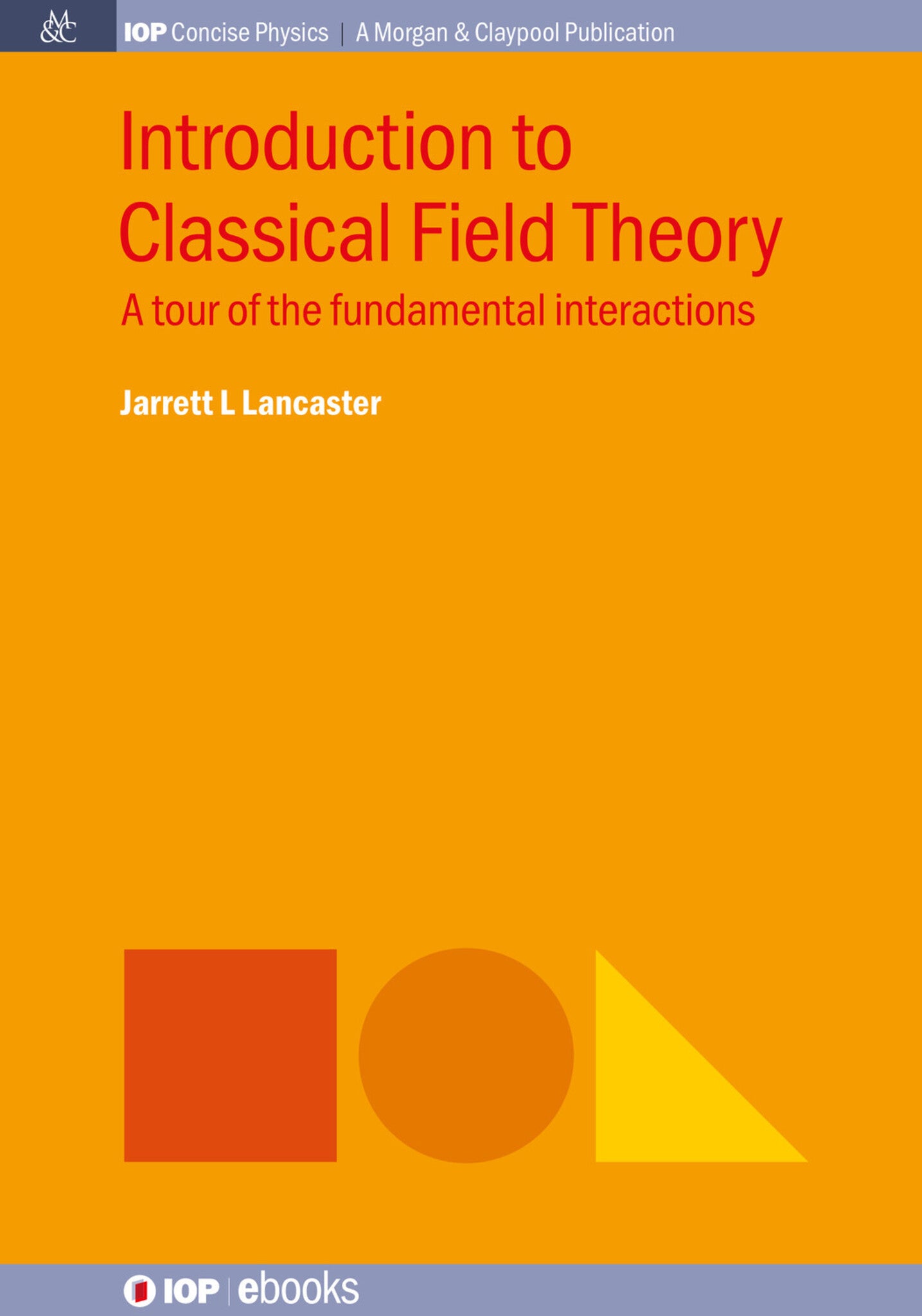We're sorry. An error has occurred
Please cancel or retry.
Introduction to Classical Field Theory

Some error occured while loading the Quick View. Please close the Quick View and try reloading the page.
Couldn't load pickup availability
- Format:
-
01 September 2018


SCIENCE / Physics / Electromagnetism

Table of Contents 1 Motivation and Introduction 1.1 The four fundamental interactions 1.1.1 Electromagnetism 1.1.2 Strong and weak nuclear forces 1.1.3 Gravity 1.2 Particle exchange and force mediation 1.3 Examining a simple model 1.4 Relativity emerges 1.5 The necessity of fields and a conundrum 1.6 Exercises 2 Basics of Scalar Field Theory 2.1 From oscillators to fields 2.2 Lagrange and Hamilton 2.3 Hamiltonian with sources 2.4 The attractive Yukawa potential 2.5 Some relativistic technology 2.6 Relativistic field theories 2.7 Exercises 3 Electromagnetism 3.1 Maxwell’s equations 3.2 Lagrangian formulation 3.3 Why like charges repel: the Coulomb potential 3.4 Resolution of a conundrum and magnetic energy 3.5 The electric field in arbitrary spatial dimensions 3.6 Propagation of interactions 3.7 Electromagnetic duality and magnetic monopoles 3.8 Gauge invariance 3.9 Exercises 4 Yang-Mills Theory 78 4.1 From Maxwell to Yang-Mills 4.2 Nonabelian gauge theory formalism 4.3 The static potential 4.4 The strong nuclear interaction 4.5 Classical color charge dynamics 4.6 Effective static quark-antiquark potential 4.7 Electroweak unification and Higgs mechanism 4.8 Exercises 5 Gravity as a Field Theory 5.1 The trouble with Newtonian gravity 5.2 Constructing an appropriate field theory 5.3 Emergence of Newton’s law of gravity 5.4 Interactions of light and matter 5.5 A glimpse at general relativity 5.6 Gravity with extra, compactified dimensions 5.7 Exercises A Mathematical Results A.1 Taylor expansions A.2 Gaussian integrals A.3 Gamma function A.4 Dirac delta function A.5 Fourier transforms A.6 Curvilinear coordinates A.7 Levi-Civita symbol A.8 Contour integration A.9 Summation of series



